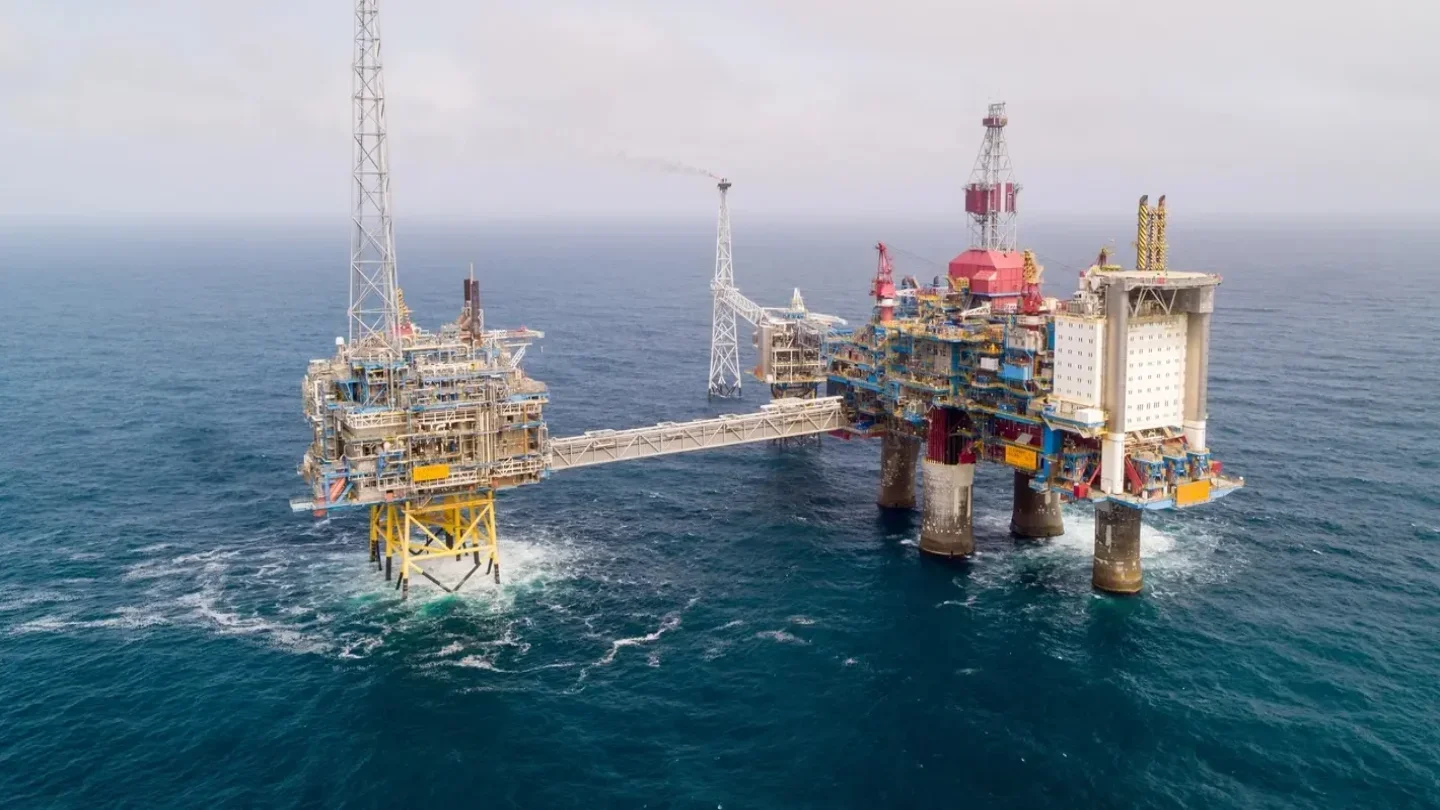Gudrun is an operational oil and gas field located in the Norwegian part of the North Sea.
Equinor Energy operates the field with a 36% stake. Vår Energi Norge (25%), OMV (Norge) (24%) and Repsol Norway (15%) are the other stakeholders.
The offshore field was discovered in 1974 and proven in 1975.
The plan for development and operation (PDO) of Gudrun was approved in 2010. It entailed an investment of NOK19bn ($3.2bn).
The field was officially opened in August 2014.
Location, Geology and Reserves
Gudrun field is located in the middle of the North Sea in licence area production licence (PL) 025, around 55km north of the Sleipner installations.
Water depth in the region is around 110m.
The field features a high temperature-high pressure reservoir at a depth of 4,000-4,700m involving the deployment of special technology used in the Kvitebjørn and Kristin developments.
It produces oil and gas from sandstone situated in the Upper Jurassic Draupne Formation and the Middle Jurassic Hugin Formation.
According to Norwegian Petroleum, the Draupne Formation hosts the main recoverable resources in good quality reservoir, while the reservoir quality in the Hugin Formation varies.
The field is estimated to contain 184 million barrels of oil equivalent.
Gudrun Field Development
Gudrun offshore oil and gas field was developed with a fixed steel platform resting on the seabed.
The platform performs partial treatment of oil and gas, following which the hydrocarbons are transported to a Sleipner A facility via two 55km-long subsea pipelines. One of the pipelines carries oil, while the other transports wet gas.
At Sleipner A, the production undergoes further processing. Subsequently, the gas is then transported to European gas markets, while the oil is exported along with the Sleipner condensate to the Kårstø processing complex north of Stavanger for further shipment.
Additionally, 55km of power cables were also laid between Gudrun and Sleipner.
Primarily, Gudrun produced via pressure depletion.
However, following the decline in production, water injection is used in parts of the Darupne reservoir from 2022. In this case, water produced from the Utsira formation is reinjected into the reservoir for pressure support and increase lifespan of the project.
Gudrun Platform
The Gudrun platform features a 7,400-tonne steel jacket, with a topside weighing about 11,000 tonnes.
The living quarters containing 42 cabins and process facilities are located within the topside. Around 430,000m of cabling and 2,855 valves were fitted in the deck.
Installed at a depth of 357ft, the platform is equipped with 16 well slots. A total of seven production wells were drilled initially.
The remaining slots provide flexibility for future tie-ins and drilling activities to increase production at Gudrun.
Key Contracts
In 2010, Aker Solutions won the engineering, procurement, construction and installation (EPCI) for the Gudrun tie-in to Sleipner.
The company also won the EPC contract for the Gudrun jacket. The work included engineering, procurement, construction, load-out and sea-fastening of the steel jacket and associated piles.
Aibel, a service company within the upstream oil & gas industry, constructed the topside facilities for the Gudrun platform.
Crane vessel Saipem 7000 was deployed to carry out the installation work on Gudrun.
ABB supplied the wireless vibration monitoring system (WiMon system) as part of the condition monitoring system installed at the site.
In July 2019, Aibel also won the contract for the detailed engineering, fabrication, installation and start-up of the water injection plant. The contract, which included work on other oil wells, was valued around NOK600m.
Recent Developments
In April 2024, Equinor announced that partial electrification of the Sleipner field centre and Gudrun platform. This will reduce annual carbon dioxide emissions from the Norwegian continental shelf (NCS) by 160,000 tonnes.
In September 2024, Equinor and its partners discovered oil and gas discovery by drilling wildcat wells 15/3-13 S and 15/3-13 A on the Gudrun field. It is estimated to host between 0.1 and 1.2 million standard cubic metres (Sm3) of recoverable oil equivalent in the intra-Draupne Formation, and between 0.4 and 1.3 million Sm3 of recoverable oil equivalent in the Hugin Formation.
A drilling campaign in 2020, around 11km southeast of Gudrun, identified three separate oil-filled reservoir zones in the Hugin Formation. These zones were around 100m thick.
Expected to contain between 1.0 and 2.7 million Sm3 of recoverable oil, the discovery may be developed as a tie-in to the Gudrun field.





